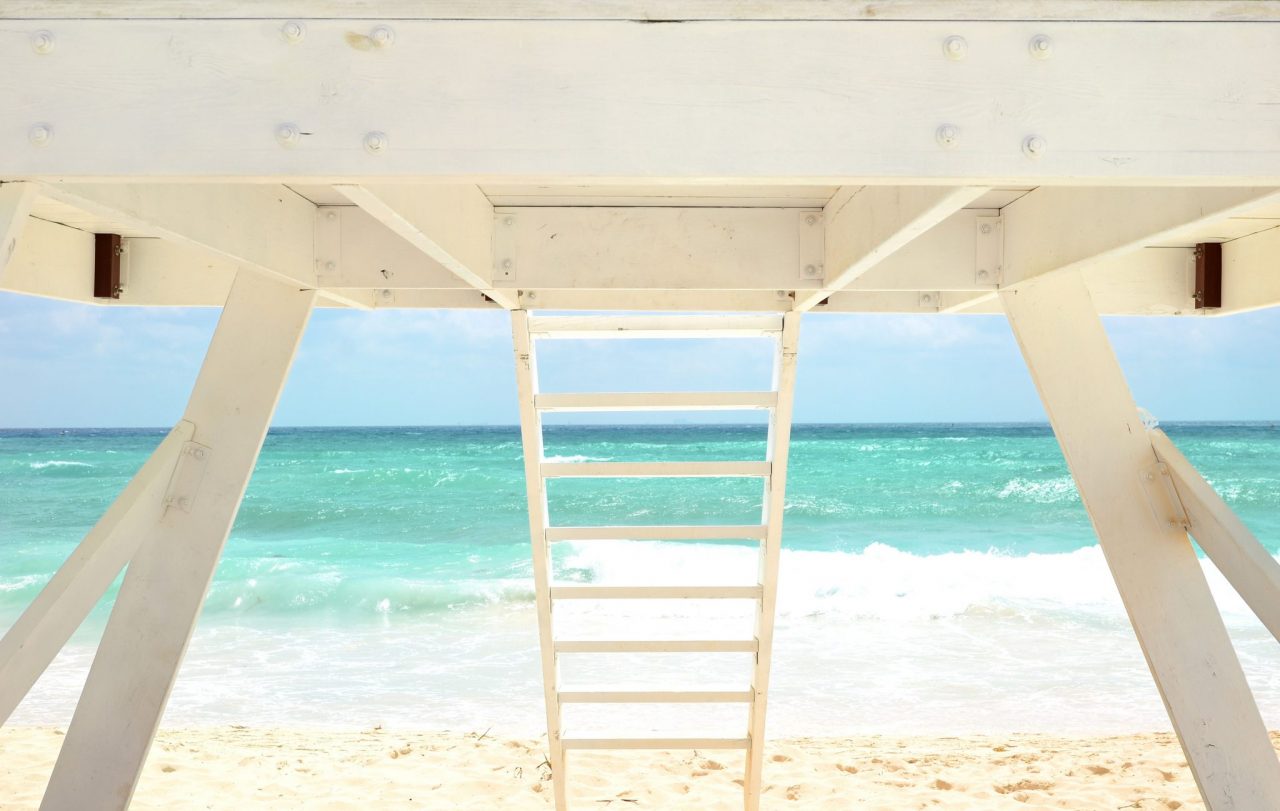A trip to the beach can provide waves of fun for the whole family, especially during the warm summer months. However, there are certain dangers to consider before you make your way to the shore. To help keep you and your family as safe as possible, our team has compiled 10 Beach Safety Tips for Summer:
Apply Sunscreen
Even limited amounts of sun exposure can place you at risk of developing skin cancer, such as Melanoma. If you plan to make your way to the beach, apply a waterproof sunscreen (30 SPF or greater) beforehand. The best way to avoid sunburn is to stay out of the sun, especially during peak exposure hours of 10 a.m. – 4 p.m. We also recommend wearing a hat, shirt and sunglasses to protect your skin.
Check the Weather
Summer storms can become quite severe, especially in Florida and other areas of the Southeast. In the Northern Atlantic Ocean, a distinct hurricane season occurs from June 1 to November 30, sharply peaking from late August through September. To avoid inclement weather, be sure to check the local weather radar before your visit.
Monitor Surf Conditions
Rip currents are very dangerous, even for the strongest swimmers. Many beaches will have visible signs and flags posted on lifeguard stations to warn visitors of rip currents. However, it’s also important that you are able to identify rip currents on your own. If you see a line of seaweed, there is a good chance you may be looking at a rip current. Still, there are not always distinct warning signs. In such instances, it’s important that you know how to escape a rip current if you find yourself trapped.
Know How to Escape a Rip Current
If you find yourself being slowly pulled further away from shore, you may be trapped in a rip current. With varying degrees of strength, it’s often difficult to recognize your predicament until it’s too late. Caught in a rip current? Don’t panic. Take a deep breath and begin swimming parallel to the shoreline (moving with the current) until you can break free. If you find yourself getting fatigued, float on your back for a moment until you regain enough strength to resume your parallel paddle to shore.
Utilize the Buddy System
It is always wise to visit the beach with someone you know, both for fun and safety purposes. If you decide to take a dip in the water, bring a friend! If an emergency situation were to occur, your buddy will be able to take swift action in resolving the situation. It many cases, it may be as simple as alerting the nearest lifeguard. In severe cases, the lifeguard may call for back-up, if needed.
Swim Near a Lifeguard
Regardless of the number of members in your party, it is important that you select a location in close proximity to a lifeguard station. Not only are lifeguards trained in life-saving techniques, they can also serve as a valuable resource should you have a question regarding water safety or first aid. The lifeguard station you choose for the day should also function as a “meeting place”, in the case that you happen to find yourself inadvertently separated from your group.
Be Aware of Marine Life
The ocean is home to thousands of marine wildlife, the majority of which are entirely harmless to humans. However, it’s best to maintain a watchful eye for jellyfish, sharks, crabs, stingrays, and other sea life that could potentially pose a risk to you or your loved ones. Additionally, be on the lookout for rocks, shells or other hazards lining the ocean floor. If possible, remain in a sandy area and shuffle your feet to avoid stingrays. One wrong step could mean pain!
Stay Hydrated
Even the strongest swimmers should pace themselves, as the combination of salt and sun may increase one’s risk of dehydration. To avoid becoming dehydrated, pack bottled water in a cooler to quench your thirst throughout the day. Even if you’re not feeling thirsty or hungry, try to eat healthy snacks and drink as much water as possible throughout the day to maintain energy.
Heed Surf Warning Flags
Generally, lifeguard towers wave color-coordinated flags to indicate current water conditions. A green flag indicates calm or mild conditions, suitable for surfing and swimming. Yellow flags suggest moderate surf and/or currents, and swimmers should proceed with caution. A red flag signifies high surf and strong currents, while a double red flag indicates the water is closed to the public. A purple flag suggests dangerous marine life, such as sharks or jellyfish.
(Editor’s note: These flags represent beach warnings for Northwest Florida and surrounding area. We recommend confirming the flag colors and warnings specific to your area before venturing to the beach.)
Pack Necessities
Before beginning your beach excursion, pack a tote bag filled with reading material, sunscreen, sunglasses/hat, towels, beverages, snacks, medicine, change of clothes and anything else you might want to have with you. A first aid kit should also be included!
We hope you find these tips helpful as you plan your family’s day of fun in the sun. What else would you add to our list of safety tips? We invite you to contribute your ideas in the comment section below!











